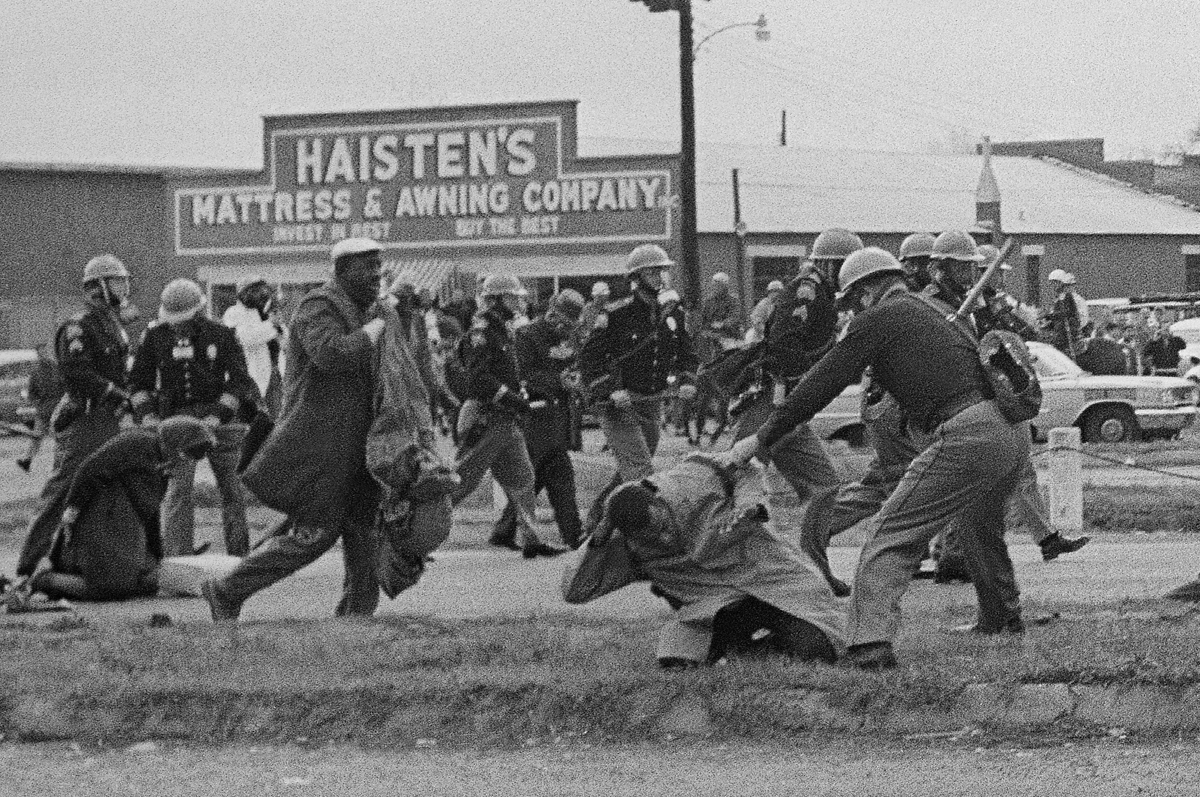This year marks the centennial of the Pulitzer Prizes, a celebration in which the Poynter Institute is a key player. About a year ago, we were commissioned by the Pulitzer Prize board to conduct a marquee event on March 31 and April 1 in St. Petersburg, Florida to honor those winners connected to the theme of “Social Justice and Equality.”
To prepare for this event, I went through what is known as the “white book,” a guide that lists every Pulitzer Prize, and marked each winner that touched on those themes.
In a first inventory, I marked 90 winners, and with the help of colleague David Shedden easily found several more. Over the next six months, he did extensive research on each winner, gathering evidence from digital searches and dusty microfilm.
The result is an astonishing resource guide, made public on this site for the first time. The equivalent of a 350-page book, it offers a list of winners with links to history, commentary, biography and the work itself. I predict it will be a treasure trove for students, teachers, journalists and scholars.
It was from this resource guide that I was able to construct a script for a two-hour theatrical event, “The Voices of Social Justice and Equality,” to be conducted at the Palladium Theater next Thursday. Georgia Rep. John Lewis is scheduled to be the keynote speaker.
During my research for this event, I noticed the invention and refinement of a powerful form of expression I am calling “social justice journalism.”
I am using that name to describe more than 100 examples of work I have recently studied. Each earned a Pulitzer Prize over the last century, the earliest example dating back to 1919.
When we scan American history for those signature moments that mark progress in civil rights, social justice and equality, certain dates pop into view. Perhaps it is 1863, or 1963.
But we might be likely to skip over 1919, which would be a terrible mistake. Black soldiers returned from Europe after WWI with a notion that their sacrifice for their country would be honored and that racial equality would rule the day. Instead, 1919 became known as the Red Summer, a bloody season of oppression, terrorism, lynchings, mob rule, rioting and resistance.
Because of the color line, it would not be until 1969 that the first Pulitzer Prize would be awarded to an individual African-American journalist: Moneta Sleet, Jr., who won for his photographic coverage of Martin Luther King Jr.’s funeral.
But when it came to race, it would not be White journalists who would invent social justice journalism. Authors such as W.E.B. DuBois, perhaps the greatest Black editorialist of the 20th century, would lead the way. In 1919, he wrote:
This is the country to which we Soldiers of Democracy return. This is the fatherland for which we fought! But it is our fatherland. It was right for us to fight. The faults of our country are our faults. Under similar circumstances, we would fight again. But by the god of Heaven, we are cowards and jackasses if now that that war is over, we do not marshal every ounce of our brain and brawn to fight a sterner, longer, more unbending battle against the forces of hell in our own land.
We return.
We return from fighting.
We return fighting.
Make way for Democracy! We saved it in France, and by the Great Jehovah, we will save it in the United States of America, or know the reason why.
This editorial voice is as muscular as anything written by authors, White or Black, in the century that would follow. As I listen to that voice and X-ray the words on the page, I begin to see the elements of what I now think of as social justice journalism:
- The identification of a social injustice, especially one that has not yet come to public scrutiny or has been suppressed by the corrupt or powerful. For DuBois, the great injustice was the irony that Black soldiers would fight for democracy in France but not be allowed to experience it in the United States. In our own time, we can make a list of such outrages, including the mass incarceration of African-American men or the lead poisoning of children in Flint, Michigan.
- An impassioned call for change. The author or artist must impress upon the audience that the status quo cannot and will not be tolerated. This does not mean that logic or reason is abandoned or that evidence is cooked for its emotional impact. It does mean that the tone of the message must have the rhetorical power to move the reader.
- A sense that things could be different. The Pulitzer Prize for Public Service often recognizes journalism that effects change within a community. But the journalism that earns such recognition often limits itself to an articulation of a problem (the public schools are dysfunctional), leaving it to other institutions to find corrective measures. Social justice journalism often reports on solutions or at least points toward corrective measures. In the 1960s, for example, Atlanta Constitution editor Gene Patterson would write editorials raising money to rebuild bombed-out Black churches.
Let’s turn from DuBois to one of his White contemporaries, Harvey E. Newbranch.
One of the darkest events of 1919 occurred in Omaha, Nebraska. A mob of thousands would attack and burn the courthouse. They were after a 40-year-old Black man, William Brown, falsely accused of raping a White woman. When the mayor intervened, they strung him up, too. The mob captured Brown, beat and hanged him, filled his body with bullets, dragged it through the streets, then burned the remains. Army troops eventually established martial law, but it was too late.
Newbranch, the editor of the Omaha Evening World-Herald, wrote a long editorial the next day titled “Law and the Jungle.” Here is an excerpt:
There is the rule of the jungle in this world, and there is the rule of law.
Under jungle rule no man’s life is safe, no man’s wife, no man’s mother, sister, children, home, liberty, rights, property….
Let reverence of the law be breathed by every mother to the lisping babe that prattles on her lap; let it be taught in schools, seminaries and colleges; let it be written in primer, spelling books and almanacs; let it be preached from pulpits and proclaimed to legislative halls and enforced in courts of justice; let it become the political religion of the nation.
By modern standards that last paragraph, festooned with semicolons, may feel over-written, but just as Justice Potter Stewart could recognize pornography when he saw it, we can recognize social justice journalism. It is there in the prose of Newbranch, who won the 1920 Pulitzer Prize for Editorial Writing.
The Ku Klux Klan surged across the South and other regions after World War I, and a number of news organizations, big and small, won Pulitzers for fighting it. In 1922, the prize for Public Service went to the New York World for an exposé on the Klan. The investigative series ran for three weeks and was heavily promoted by the newspaper. During that three-week run, circulation rose by 100,000 copies daily (100,000!). The World syndicated the series to eighteen newspapers around the United States, reaching more than 2 million readers per day.
In 1923, that same prize would go to the Commercial Appeal in Memphis. The paper reported stories that revealed the activities of the Klan, but the journalistic weapon of choice against the terrorists turned out to be another Pulitzer staple: the editorial cartoon. The cartoonist was an artist named J.P. Alley, and his biting cartoons, run on the front page of the newspaper, won him admirers and physical threats from the Klan, which he exposed in additional drawings.
In 1925, the big prize went to a little newspaper, the (Columbus, Georgia) Enquirer-Sun. It became the first small town newspaper to win a Pulitzer Prize for Public Service, reporting on lynchings and the Klan. The paper was owned by a remarkable couple, Julian and Julia Collier Harris. Because of boycotts, threats and sabotage, the couple sold the paper in 1929. It took them 20 years to pay off their debts.
These examples illustrate three basic tenets of social justice journalism:
- It often requires a combination of moral and physical courage. Here we find journalists threatened physically and financially for their shining a light on hatred, intolerance and corruption.
- We see that social justice journalism is a mode and not just a genre. It takes many forms, from reports to investigations to editorials, even to cartoons. In the arts, it is expressed in fiction, poetry, drama and music.
- Social justice journalism often requires unusual methods and the marshaling of considerable resources to impress upon the public mind the need for change. In these cases that meant everything from a long series, to page one cartoons, to enterprising marketing strategies.
Let’s dive into Shedden’s Resource Guide for one more example from the 1920s.
As the Klan rose in influence and numbers late into the 1920s, a newspaper in the heart of Dixie rose up against it. In 1928, the Pulitzer Prize for Editorial Writing would go to Grover Cleveland Hall, editor of the Montgomery Advertiser. By then the Klan included countless public officials, politicians, law enforcement officials and both United State senators from the state of Alabama. Too often there was silence from the pulpit — and the press.
An exception was Grover Hall. In July of 1927, Hall became outraged at the flogging of a young Black man at a rural church. He led his newspaper on a crusade designed to bring the Klansmen to justice. He exposed Klan members, worked to limit their activities and supported a law to make it illegal to wear a mask in public. This editorial was titled “Unmask!”
Mask-wearing in public places is indefensible and must be outlawed. All good citizens, we believe, must now realize that the mask in Alabama is a source of unmitigated evil. It is a menace to life and limb and a reproach to civilized society. Concealed under hood and robe men have stalked about in the night in Alabama and cruelly assaulted helpless people, and in other instances intimidated and wronged citizens of this State.
We haven’t even reached the Great Depression yet, where issues of social injustice, inequality and poverty would require a level of social justice journalism for which few journalists were prepared.
In the weeks and months ahead, Poynter will use this space for other examples of social justice journalism – from history and from our own time. The goal will be to inspire physical and moral courage among journalists and to help all of us remember the power that comes from the convergence of mission and craft.







